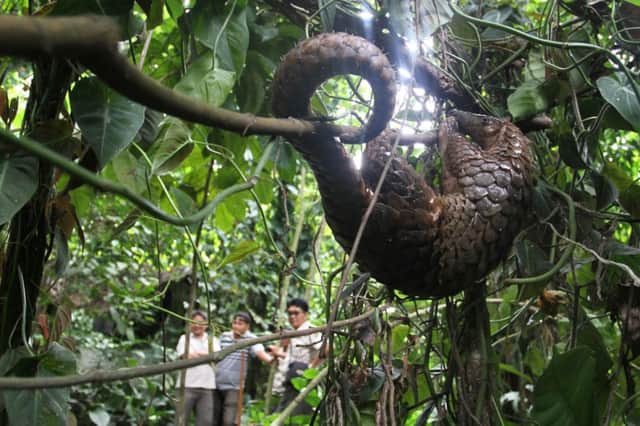India: Poachers downsize to combat conservation


The Indian pangolin – a scaly creature whose defence mechanism of rolling up into a ball is no help against humans – and the star tortoise – a popular pet that can reach up to a foot in length – are just two of the species that are being killed or smuggled in increasing numbers while conservation efforts are focused elsewhere.
“The problem is that we were turning a blind eye to all lesser-known species and suddenly this very lucrative trade has been allowed to explode,” said Belinda Wright, director of the Wildlife Protection Society of India, an advocacy group.
Advertisement
Hide AdAdvertisement
Hide AdWildlife specialists say the growing affluence of China, Vietnam and other Southeast Asian countries has helped drive the demand for exotic animals. Some are kept as pets, while others are eaten for their purported but questionable medicinal or aphrodisiacal properties.
Pangolins are killed for their meat, considered a delicacy, and their scales, which are used in traditional Chinese medicine. The scales are made of keratin, the same protein that forms hair and fingernails, and have no documented medicinal value.
The pangolin trade was once obscure in India, with an average of only about three a year reportedly killed by poachers between 1990 and 2008. Ms Wright said that soared to an average of more than 320 per year from 2009 to 2013.
That only covers confirmed seizures. Customs officials and wildlife experts estimate that seizures form only 10 per cent of the total illegal trade. The International Union for the Conservation of Nature estimated in a report last month that more than a million pangolins have been poached from habitats in Asia and Africa.
Star tortoise seizures by airport and port customs officials also have increased dramatically, from an average of less than 800 per year from 1990 to 1999 to more than 3,000 per year from 2002 to 2013, according to the protection society.
Similarly, the growing demand for lizard skin, meat and bones has led to the near-disappearance of the monitor lizard in the Indian countryside, said Tito Joseph, a programme manager for the society. Monitor lizard meat, especially the tongue and liver, is mistakenly believed to have aphrodisiacal properties, while lizard skin finds use in high-end bags and belts.
Such animals became more attractive to poachers as the Indian government strengthened the tiger conservation programme it began nearly four decades ago. Vast swathes of forests and hills have been turned into tiger reserves and national parks.
Indian officials deny neglecting lesser-known species. Creating the tiger reserves also helps protect smaller species in these areas, they say.
Advertisement
Hide AdAdvertisement
Hide Ad“The focus on tigers does not mean that other species are not taken care of,” said SB Negi, of the Wildlife Crime Control Bureau, a government agency.
But the bureau has only just begun efforts to collect data on many smaller species now in peril, including the pangolin, reflecting the scant attention they have received so far.